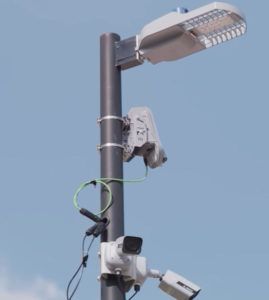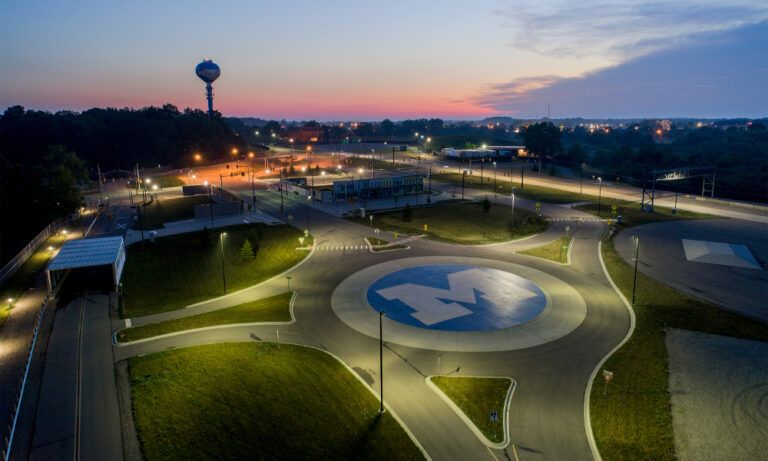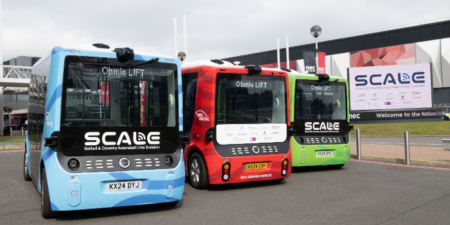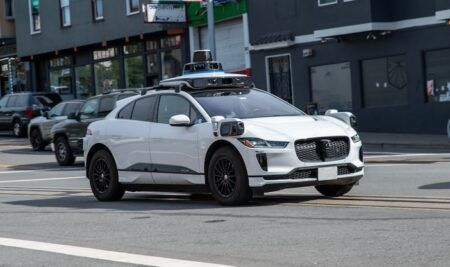Telecommunications firm Verizon has equipped the Mcity test facility at the University of Michigan (U-M) with its 5G Ultra-Wideband network to help advance transportation safety and shape the future of autonomous vehicles and smart cities using high-speed cellular connectivity.
The Verizon 5G network is now live at Mcity where researchers are testing various 5G solutions designed to boost pedestrian safety and avoid car accidents. This includes installing 5G-connected cameras at every intersection inside the Mcity test track to help identify traffic and pedestrian patterns to prevent collisions. While connected cars have on-board units (OBUs) that can ‘talk’ to each other to help avoid accidents, cameras connecting to traffic light signals can help protect people walking or biking.
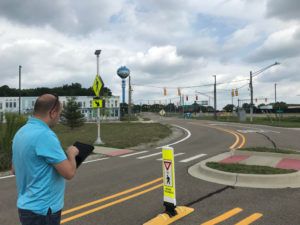 “We’ve installed signal controllers at the intersections within Mcity that provide signal phase and timing (SPaT) data to the 5G network,” expalined Eric Raamot, chief technology officer at Econolite, which is also an Mcity partner. “With 5G, we can help drivers see things before the human eye can register, and prevent collisions by changing the traffic signals when a safety risk is imminent.”
“We’ve installed signal controllers at the intersections within Mcity that provide signal phase and timing (SPaT) data to the 5G network,” expalined Eric Raamot, chief technology officer at Econolite, which is also an Mcity partner. “With 5G, we can help drivers see things before the human eye can register, and prevent collisions by changing the traffic signals when a safety risk is imminent.”
This is enabled through several key components of 5G service: high bandwidth, low latency and the ability to connect hundreds of devices in a relatively small area. If each vehicle passing through an intersection is able to relay and receive information from other vehicles and streetlight cameras, that information can be used to notify cars when lights turn red or vehicles ahead come to a sudden stop. Verizon’s 5G Ultra-Wideband network is able to transmit all that data extremely high speeds, enabling connected and autonomous vehicles (CAVs) to react faster than humans when it comes to braking to avoid a collision. 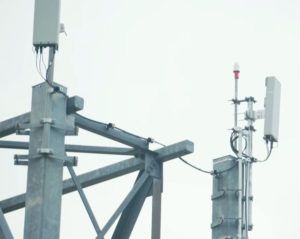
Verizon is part of Mcity’s ‘leadership circle’ of 11 companies, including General Motors, State Farm and LG, which are all working to help fuel research, development and innovation in vehicle-to-vehicle (V2V) and vehicle-to-infrastructure (V2I) communications. Verizon has been part of the Mcity public-private partnership since July 21, 2015, when U-M opened the 32-acre test facility, which includes more than 16 acres of roads and traffic infrastructure, simulating the broad range of complexities vehicles encounter in urban and suburban environments.
“5G can change all of our lives by making our commutes a lot easier and safer,” said Tami Erwin, CEO of Verizon’s business group. “Cars can communicate with each other in near real-time and with sensors installed in streets and traffic lights. They’ll be able to almost instantly share information on roadway and weather conditions and alert drivers to dangerous situations ahead.”
Greg McGuire, associate director at Mcity, said, “Testing new technologies in a safe, controlled environment is essential before deploying automated vehicles on public streets and highways. Verizon 5G Ultra-Wideband can have a profound impact on smart vehicle technology. By giving the companies who are testing here access to Verizon’s 5G network, we’re hoping they can improve on their existing technology and potentially create applications that don’t even exist yet to make our roads and intersections safer.” 